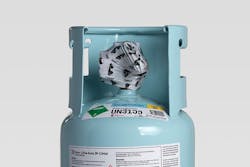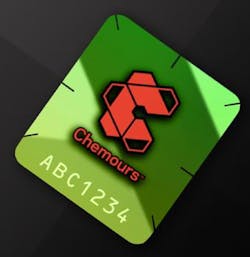HFC Phasedown Highlights Need to Beware of Illegal Refrigerants
Thanks to a network of responsible influencers, advocates, original equipment manufacturers and end users, the heating, ventilation, air conditioning and refrigeration (HVACR) industry has paved the way for a smooth transition from hydrofluorocarbon (HFC) refrigerants to the more environmentally friendly hydrofluoroolefin (HFO) refrigerants. Unfortunately, other parties are creating bumps in the road by introducing illegal refrigerants to the market.
Activities of an illegal nature—initiated by the phase down of HFCs, which started under the American Innovation and Manufacturing (AIM) Act on January 1, 2022—in the U.S. and Canada may increase as the phase down progresses. As the law of economics tells us, as demand for HFCs puts pressure on aThe potential for increased illegal activities has two solid foundations. The industry saw an illegal market blossom in the late 1980s, when the Montreal Protocol phased out the production and importation of virgin chlorofluorocarbons (CFCs) and hydrochlorofluorocarbons (HCFCS)—so we can cite the axiom of history repeating itself. Secondly, we find a “case study” in the European Union, which experienced an influx of black-market HFC imports after implementing HFC phase-down regulations following the 2016 Kigali Amendment and the implementation of F-gas.
Why you should care
Risks that come with purchasing illegally imported refrigerants include:
Safety. Illegal refrigerants may contain unknown flammable contents orWhat you can do
First, only purchase refrigerant from a trusted source and be wary of unusual pricing or deals. It’s important to pair this practice with the following:
- Examine all refrigerant packaging for an anti-counterfeiting security shrink sleeve.
- Make sure each single-use recyclable cylinder has an Izon® security label.
- Ensure packaging authenticity by scanning the QR code on the Izon® label or by visiting GenuineRefrigerants.com and entering the seven-digit code on the label.
Brandon Marshall is North America Marketing Manager, Thermal & Specialized Solutions, The Chemours Company
Dr. Chuck's Corner: Revisiting Safety and Handling of Refrigerant Cylinders
Day after day, HVACR technicians buy, transport, use, and dispose of refrigerant cylinders in addition to working to keep customers satisfied and systems up and running efficiently. The most common container is the standard 30 lb. disposable jug, but larger containers (100 lb.), as well as recovery cylinders are also handled frequently. While there are proposed regulations in the U.S. to move away from disposable cylinders, it is still good practice to periodically revisit safety protocols related to all refrigerant cylinders, regardless of their design or size.
Refrigerant manufacturers and other sources have a wealth of information available. In addition, the key points listed below should be considered:
- Use proper personal protective equipment, such as safety glasses w/ side shields, gloves, and safety shoes, etc., when handling refrigerant cylinders.
- Store cylinders at temperatures no higher than 125 F. Be especially careful inside service vehicles during summer months.
- When not in use, store cylinders in a protected area, with valves and caps tightly sealed.
- Do not drop, dent, mechanically abuse, or apply direct flame to any cylinder.
- Never force connections. Verify proper hookup of charging hoses and open valves slowly.
- Never attempt to repair or alter containers, valves, or relief devices. Do not refill disposable cylinders.
- Do not use refrigerant to pressurize any system, to check for leaks or for other purposes.
- Know how to correctly determine the maximum fill weight for refrigerant recovery cylinders.
- Use a hand cart or dolly to move large cylinders. Do not roll them.
- For refrigerant blends, always remove liquid from the cylinder when charging, either thru a liquid valve, or by inverting small cylinders.
- Check with local regulation and code experts if you are storing many cylinders at one location.
Refrigerant cylinders are as much a part of our day-to-day work as our wrenches and pressure gauges. Treating the containers that hold compressed, liquified gas with respect and reviewing standard industry handling practices will enable technicians to continue to provide their essential services to customers in an efficient, safe, and productive manner.
About the Author
Brandon Marshall
North American Marketing Manager, Thermal & Specialized Solutions
Brandon Marshall is North American Marketing Manager, Thermal & Specialized Solutions, Chemours.


